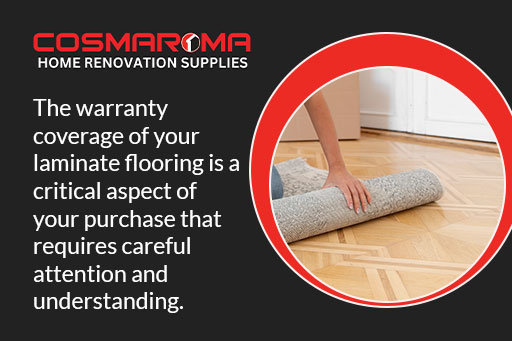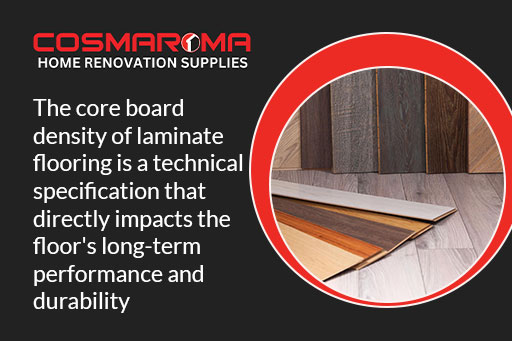
11 Key Questions to Ask Laminate Flooring Stores in Toronto
If you’re looking to buy laminate flooring in Toronto, you’re making a great choice. Laminate is durable, affordable, and stylish.
But before you buy, it’s essential to ask the right questions at a laminate flooring store in Toronto.
At Cosmaroma, we offer a wide array of high-quality laminate flooring. We always encourage our customers to understand every aspect of their choice before they buy. After all, asking the right questions can help you make the right choice.
This guide covers everything you need to know about laminate flooring, including its benefits, types, and the expert questions to ask before making your final decision.
Let’s get started.
Questions o Ask at Laminate Flooring Stores in Toronto
Laminate flooring is a multi-layered flooring option that mimics the appearance of hardwood, stone, or tile. Here are some questions you should consider asking at a laminate flooring store in Toronto like ours.
1. What is the AC (Abrasion Criteria) rating of the laminate?
When buying laminate flooring in Toronto, understanding the AC (Abrasion Criteria) rating is crucial as this indicates the flooring’s durability and intended use.
The rating system ranges from AC1 to AC5, with each level representing increased durability. For residential spaces in Toronto, AC3 is typically sufficient, providing good resistance to daily wear and tear in high-traffic areas like living rooms and hallways.
However, if you are considering installation in a home office or areas that see heavy use, you might want to consider AC4, which offers commercial-grade durability. AC5, the highest rating, is generally reserved for high-traffic commercial spaces and might be unnecessary for residential use.
This rating system helps ensure you invest in flooring that matches your specific needs without overspending on unnecessarily high ratings or risking premature wear with too low a rating.
2. What is the warranty coverage and how long does it last?
The warranty coverage of your laminate flooring is a critical aspect of your purchase that requires careful attention and understanding. A comprehensive warranty typically includes both residential and commercial coverage, with residential warranties often ranging from 15 to 30 years. It is essential to thoroughly review what specific types of damage are covered, such as wear-through, staining, fading, and water damage.

Pay particular attention to the warranty’s stipulations regarding installation requirements and maintenance procedures, as failing to follow these guidelines could void your coverage.
Additionally, inquire about the warranty’s transferability This can be a valuable selling point if you plan to put your home on the market in the future.
Some manufacturers offer tiered warranty systems where different aspects of the flooring have varying coverage periods. Understanding these distinctions is crucial for long-term protection of your investment.
3. Is the laminate approved for installation over radiant heating?
In Toronto’s cold climate, radiant heating compatibility is a crucial consideration if you plan to buy laminate flooring. Not all laminate products are designed to withstand the consistent heat exposure from underfloor heating systems, which can lead to significant problems if not properly addressed.
When a laminate is approved for installation over radiant heating, it means the product has been tested to maintain its structural integrity and appearance despite temperature fluctuations. The manufacturer should specify the maximum temperature allowed and provide specific installation guidelines. This compatibility ensures that your flooring won’t warp, gap, or buckle due to heat exposure.
It is particularly important to discuss the specific requirements for installation, including any necessary temperature ramping procedures and the type of underlay required for use with radiant heating systems.
4. What is the laminate’s moisture resistance rating?
Toronto’s climate, with its significant seasonal humidity variations, makes moisture resistance a critical factor when it comes to selecting laminate flooring. Modern laminates have varying degrees of moisture protection, which are indicated by their moisture resistance rating.
This rating becomes particularly important for installations in areas prone to moisture exposure, such as bathrooms, kitchens, and basements. High-quality moisture-resistant laminates typically feature enhanced core materials and edge treatments that help prevent water infiltration. Understanding this rating helps you assess how well the flooring will handle everyday spills, cleaning, and humidity fluctuations.
Some manufacturers now offer waterproof laminate options, which provide additional protection against standing water and high moisture environments. However, it is important to note that even waterproof laminates have limitations, and proper maintenance remains essential for long-term performance. Make sure to understand this aspect when buying laminate flooring in Toronto.
5. What kind of underlayment is recommended?
Underlayment is a critical yet often overlooked component of laminate flooring installation that can significantly impact the overall performance and comfort of your floor. Far more than just a simple base layer, a high-quality underlayment serves multiple essential functions.
For one, it provides crucial sound dampening, reducing noise transmission between floors and creating a quieter living environment.
Moisture barrier protection is another key benefit, preventing potential damage from ground moisture or minor spills.
The underlayment also plays a crucial role in floor leveling, compensating for minor subfloor imperfections that could cause uneven wear or premature damage to the laminate.
Additionally, it contributes to the overall thermal insulation of the floor, enhancing comfort by providing a warmer, more cushioned walking surface.
Some modern laminate products now come with pre-attached underlayment, which can simplify installation and potentially reduce your overall project costs. However, the specific needs of your space – including subfloor condition, noise requirements, and moisture concerns – will ultimately determine the most appropriate underlayment solution.
6. What is the core board density?
The core board density of laminate flooring is a technical specification that directly impacts the floor’s long-term performance and durability. Higher-density cores provide superior stability and resistance to various forms of stress, making them an essential consideration for homeowners seeking a long-lasting flooring solution.

A dense core offers increased protection against denting from heavy furniture, impacts, and daily wear and tear. This density plays a crucial role in the floor’s ability to maintain its shape and appearance over time, reducing the likelihood of sagging, warping, or deformation.
Moreover, higher-density cores typically demonstrate better moisture resistance, which is particularly important in environments with fluctuating humidity levels. While higher-density cores may come at a slightly higher initial cost, they often prove to be a more economical choice in the long run due to their improved durability and reduced likelihood of needing early replacement.
7. What acclimatization period is required?
The acclimatization period is a critical yet frequently misunderstood aspect of laminate flooring installation, especially in a climate-variable city like Toronto.
Laminate flooring needs time to adjust to the specific environmental conditions of its installation space. This is typically 48 to 72 hours.
During this period, the flooring materials are left in the room where they will be installed, allowing them to adapt to the temperature and humidity levels. This process is crucial for preventing future issues such as gaps, buckling, or excessive expansion and contraction.
The specific acclimatization requirements can vary depending on the manufacturer and specific product, making it essential to follow the exact guidelines provided with your chosen laminate. Proper acclimatization ensures that the flooring will maintain its structural integrity and appearance, preventing costly repairs or replacements down the line.
8. What installation methods are recommended?
The installation method you choose can significantly impact both the project’s complexity and its long-term performance. Different manufacturers offer various locking systems, ranging from simple click-lock mechanisms to more complex installation techniques. Some systems are designed for DIY enthusiasts, while others may require professional installation to ensure optimal results.
The two primary installation methods are floating floors and glue-down installations. Floating floors are typically easier to install and allow for some movement, making them ideal for spaces with slight subfloor imperfections. Glue-down installations, on the other hand, provide a more permanent solution and are better suited to commercial spaces or areas with heavy traffic.
The chosen installation method will impact not only the initial project cost but also the long-term performance of the flooring. This includes its ability to withstand daily wear and potential moisture exposure.
9. What maintenance and cleaning products are recommended?
Proper maintenance is crucial to extending the life (and preserving the appearance) of your laminate flooring. Different manufacturers may have specific recommendations for cleaning products and maintenance techniques that are critical to maintaining the warranty.
Many laminate floors require specific cleaning solutions that are designed to clean effectively without damaging the protective surface layer. Avoid using too much water, steam cleaners, or harsh chemical cleaners, as these can cause significant damage to the flooring. Regular maintenance typically involves sweeping or vacuuming to remove dirt and debris, followed by cleaning with a manufacturer-recommended solution.
Some laminates may require special attention to prevent scratching, such as using felt pads under furniture or avoiding dragging heavy objects across the floor.
Understanding and following these maintenance guidelines is not just about keeping the floor looking good. It is also essential for maintaining the validity of your product warranty.
10. Are samples available to take home?
Obtaining and testing flooring samples is a critical step in the selection process that should not be overlooked. Taking home physical samples allows you to assess the flooring in your specific lighting conditions, which can dramatically affect how the colour and texture appear.
This is particularly important as colours can look significantly different under various lighting conditions and against your existing decor. Samples also provide an opportunity to test the flooring’s practical qualities, such as scratch resistance and how well it stands up to daily wear.
You can place samples in high-traffic areas to simulate actual use, checking how they respond to foot traffic, furniture movement, and potential impacts.
Additionally, samples allow you to see how the flooring interacts with your existing baseboards, furniture, and overall room aesthetic. This hands-on evaluation can prevent costly mistakes and ensure you’re completely satisfied with your selection before making a full investment.
11. What is the price per square foot installed vs. materials only?
Understanding the complete cost of laminate flooring goes far beyond the simple price per square foot of materials. A comprehensive budget should account for all associated expenses, including underlayment, trim, delivery, and professional installation if required. Many homeowners make the mistake of only considering the base material cost, only to be surprised by additional expenses later in the project.
Professional installation can significantly impact the overall project cost, with prices varying based on the complexity of the job, room layout, and any preparatory work needed. It’s advisable to get multiple quotes and understand exactly what is included in each.
Some retailers offer package deals that include materials, underlayment, and installation, which can sometimes provide better overall value. Don’t hesitate to ask for a detailed breakdown of costs and to compare quotes from multiple sources to ensure you’re getting the best value for your investment.
Buying laminate flooring is an excellent investment, but only if you choose wisely. Asking the right questions at a laminate flooring store in Toronto ensures you get the best quality for your budget. Whether you need durability, style, or affordability, laminate flooring offers an excellent balance of all three. Looking for the best deals? Visit Cosmaroma today and transform your home with stylish, durable flooring.
